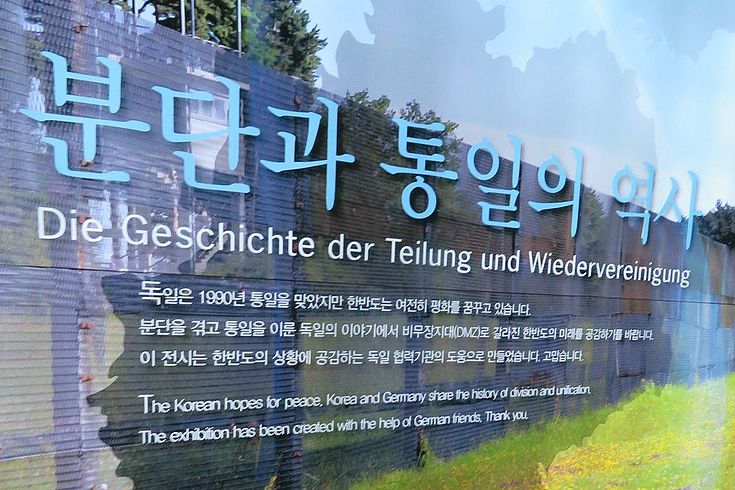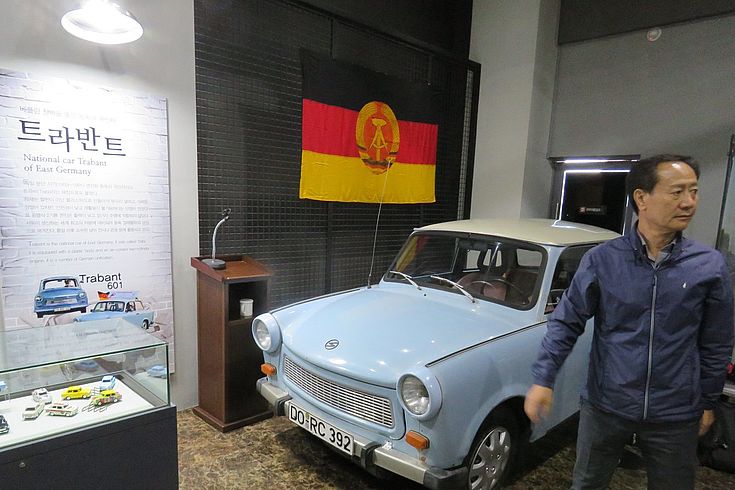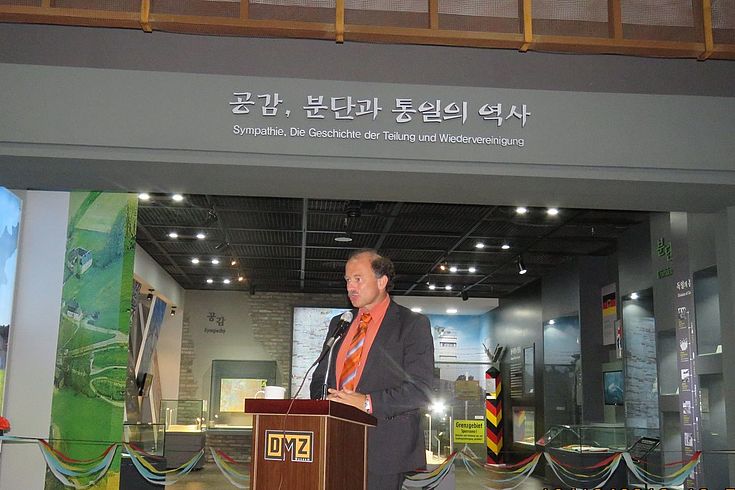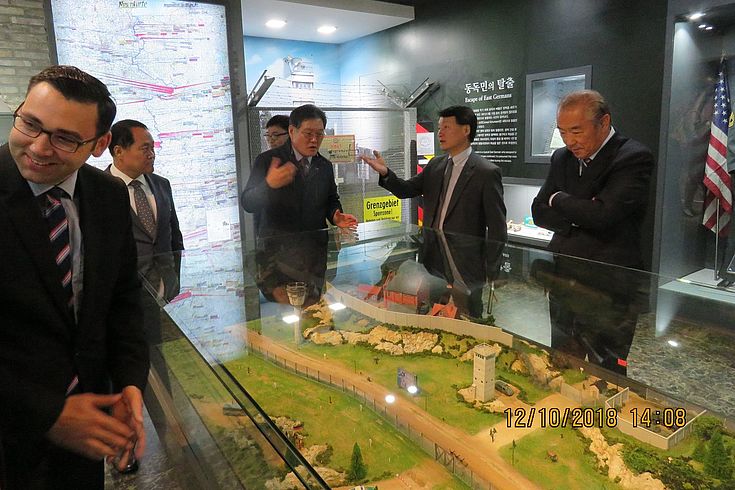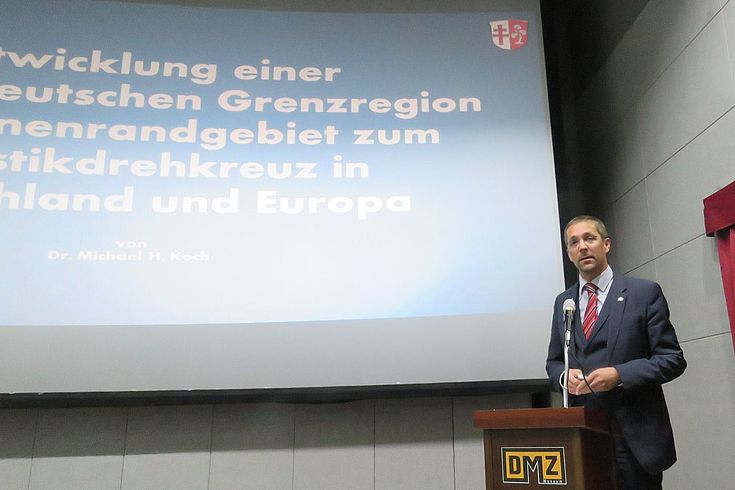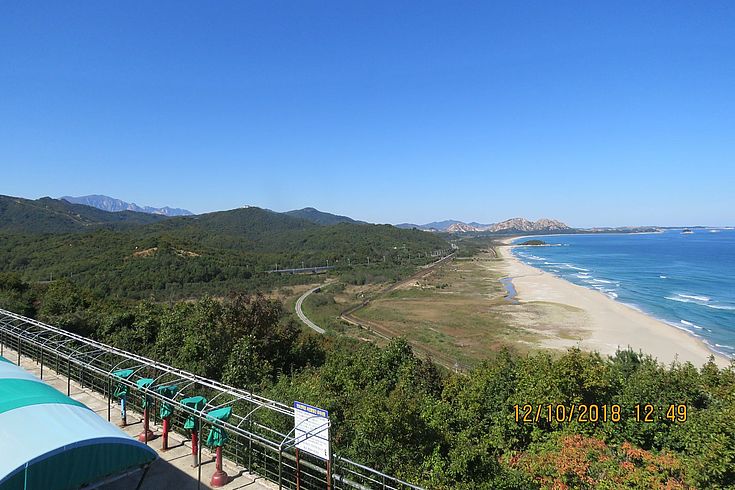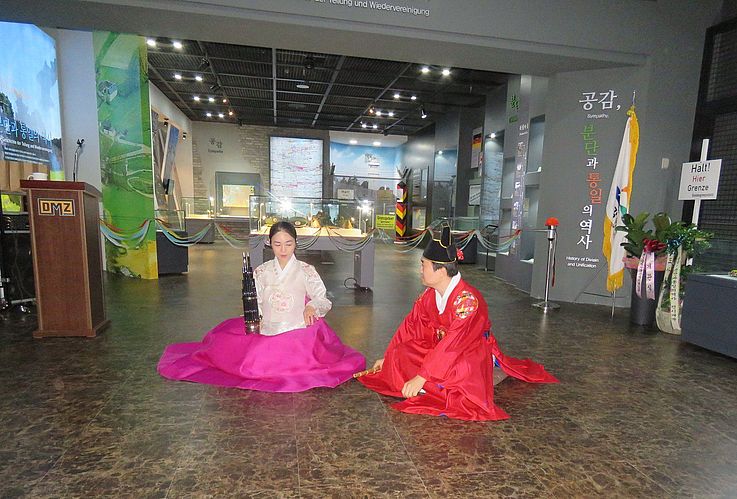Visit
Exhibition on the Inner-German Border in the DMZ Museum
The exhibition was prepared by the Gangwon DMZ museum with the German-German museum in Mödlareuth, Point Alpha Foundation, and also HSF Korea.
HSS
After cooperating for several special exhibitions, we now could celebrate the opening of a permanent exhibition on the inner-German border at the Gangwon DMZ museum. This was made possible through a cooperation with two German border museums, the German-German museum in Mödlareuth at the Thuringian-Bavarian border and the border museum Point Alpha at the Thuringian-Hessian border.
The "Trabbi".
HSS
The exhibition features many original pieces from Germany, among them a "Trabbi" (Trabant car, the most popular car in East Germany), parts of the border fortification, including the feared spring guns and mines, uniforms of border guards etc. A diorama shows the structure of the border area; differently from Korea, the border was only fortified on the East German side, in the Western part there were merely signs indicating the border. However, also the encouraging history of the border after unification, when the so-called "green belt" became the largest European biotope system, is showcased here.
Congratulatory remarks by Robert Lebegern, director of the German-German museum in Mödlareuth, a village called "little Berlin", since it was divided itself by a wall like Berlin.
HSS
As special guests to the opening, County mayor Dr. Michael Koch of Bad Hersfeld-Rotenburg (where Point Alpha is located) arrived with Christine Trinks, head of international relations of the county. Both visited also Cheolwon county, with which Bad Hersfeld-Rotenburg enjoys a vivid exchange since some years. Also, Robert Lebegern, director of the German-German museum, as well as Dani Chaboni, researcher at Point Alpha, were present. The director of the museum, Rhee Won-Chan, could also welcome County chief Lee Kyong-Il of Goseong. Goseong is since 2005 a partner of Hanns-Seidel-Foundation Korea and is since 2008 partner of Bayreuth county in Germany.
A model shows the structure of border fortifications in East Germany.
HSS
The Gangwon DMZ museum last year has been visited by more than 140.000 guests. This year, the new permanent exhibition gives them a chance to closer relate also to the history of German division and unification, giving them hope for a peaceful unification of their own country.
Presentation of County Chief Dr. Michael Koch of Bad Hersfeld-Rotenburg at the workshop.
HSS
At a small conference, the German guests recounted the history of the German border area, as well as today's situation. The museums in Mödlareuth and Point Alpha are as well places to remember, but also for learning about history.
View over the border area to North Korea.
HSS
The visit would not have been complete without visiting the inner-Korean border, which is just a few hundred meters away from the Gangwon DMZ museum. The wonderful autumn sun allowed great views of Kumgangsan and Haekumgang - places, which hopefully soon can again be visited by all Koreans, without crossing borders...

